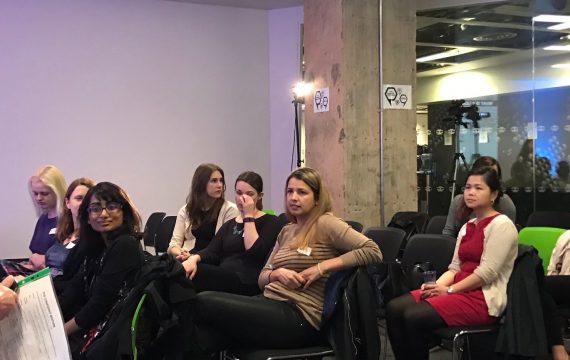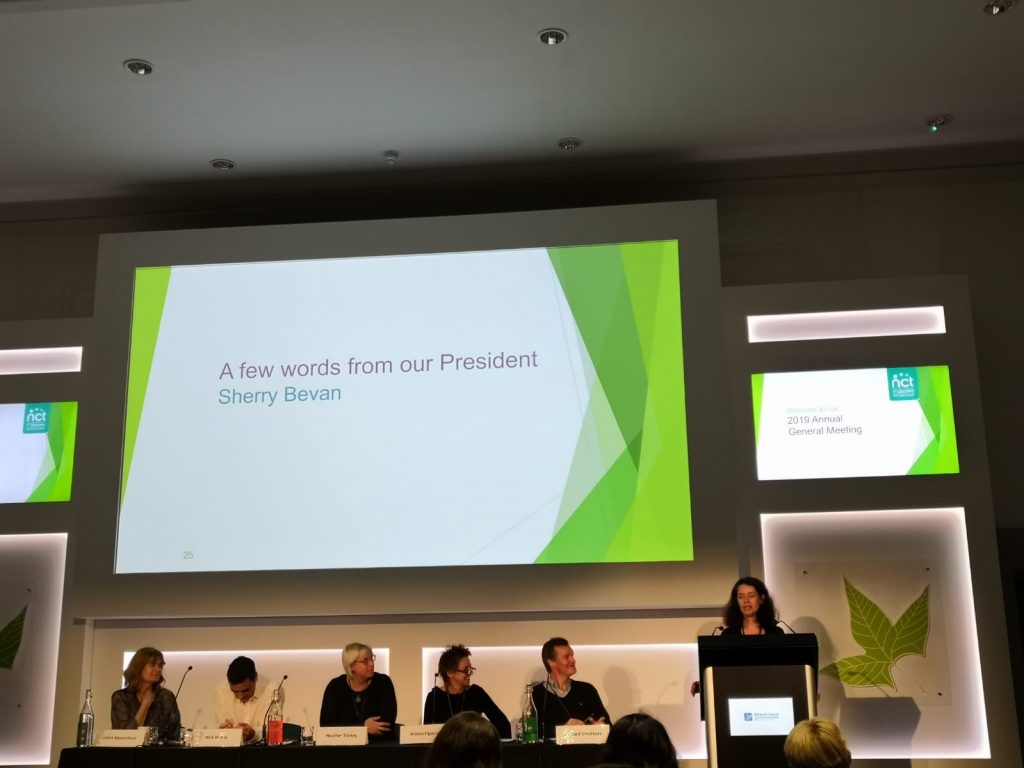40% of employers expect more than half of their workforce to work from home after the COVID-19 pandemic has ended, and many of these are women. The danger is that women will become less active and less visible in the workplace. With less visibility comes lesser chances of promotion.
In this episode, we explore:
- why Covid-19 pandemic has had and will continue to have a bigger impact on women’s careers than on men’s, even in the technology sector
- how the future workplace and the introduction of hybrid working is going to affect women’s career prospects
- the risk of hybrid working on the visibility of women and how this will have a negative impact on your organisation’s gender pay gap
- what you can do to stop this from happening and protect your reputation as a forward-thinking employer striving to attract, develop, and retain female talent in its workforce.
Key resources mentioned in this episode:
Annual report 2020 of the Women and Work All Parliamentary Group
Hackajob’s survey on What Do Tech Talent Want in 2021
Stanford Graduate School of Business: Does Working From Home Work?
PwC’s Women In Work Index 2020
Find out more about the Women In Technology Leadership programme HERE.
Book an exploratory chat:
Book an exploratory chat with me! I’m offering exploratory calls with me so that you can ask any questions you have about the work I do with technology companies on attracting, developing, and retaining your female talent so you can close the gender pay gap.
If you’d like a totally transparent conversation about how working with me could support your organisation’s talent goals, email me to book a call now: sherry@sherrybevan.co.uk.
Sign up to newsletter:
If you’re looking to stay in touch with the latest industry trends, research, and best practice to develop and retain your female talent so that you close the gender pay gap and bring major benefits to your organisation in 2021 and beyond, sign up to my monthly newsletter here: http://www.sherrybevan.co.uk/newsletter-signup/.
Connect with Sherry:
Email me: sherry@sherrybevan.co.uk
Follow me on Twitter: https://twitter.com/SherryRB
Connect with me LinkedIn: https://www.linkedin.com/in/sherrybevan/
—
Listen to the podcast here
COVID-19 And The Gender Pay Gap: Why Women May Have Less Chances Of Promotion After The Pandemic
Welcome back to this episode in which we’re going to explore how COVID-19 is having a bigger impact on women’s careers than on men and what employers can do about it. I’m sure if we were all back in the office, we’d be swapping stories of how we got the barbecue out for the first time, how busy the beaches and parks were, how good it was to have a sunny bank holiday weekend whereas there’ll be many of us also wishing at the same time that it would rain because the garden needs a good soak. I’ll happily confess that I’m in that second camp wishing that it would rain so I can get my plants a good soaking. I’ve been sheltering from the sun so that I can finalise the preparations for my next Women In Technology Leadership Programme, which started on June 28, 2021.
Not only has COVID-19 affected our conversations after the bank holiday weekend. I don’t know about you but it seems that every week there’s a new report being published on how COVID-19 is having a negative impact on women and on their careers which means that longer-term, the gender pay gap will widen. You might be thinking, “It’s not a big problem for us in technology,” because after all the lockdown has mainly affected those sectors where women are overrepresented, such as hospitality, arts, retail, childcare which have all been shut down for long periods of time.
What you’ve got to remember is that across all sectors, including technology, women were more likely to be trying to balance full-time working and full-time homeschooling. The report from the Women and Work All Parliamentary Party Group shows that women were more likely to have requested furlough holiday or unpaid leave so they could homeschool despite their worries that this would put their careers on hold and that in the long-term that ultimately pay the price by missing out on promotion opportunities. Indeed, we know that many women decided to quit the workforce altogether rather than risk complete burnout of trying to do it all.
Explore the growth mindset so that you can identify any limiting behaviours.
The good news is over the years, all countries across the Organisation for Economic Cooperation and Development (OECD) have made consistent gains towards progress for women in work. In the PricewaterhouseCoopers’ Index they studied a range of factors, including the gender pay gap and female unemployment. It showed that progress for women in work is expected to fall more than 2% between 2019 and 2021. It warned that progress towards gender equality needs to be twice as fast as its historical rate, simply in order to undo the damage caused by COVID-19 to women in work. As you know, gender pay gap reporting has been compulsory for employers in the UK with 250 more employees since 2017. This means employees must report the salary difference between male and female workers. In 2020, compulsory reporting was suspended at the outbreak of the pandemic. It’s not going to restart until October in 2021.
There’s a great quote that I’d like to share from Laura Hinton, who is PwC’s Chief People Officer. She says, “It’s paramount that gender pay gap reporting is prioritised. We’ve targeted action plans, put in place as businesses focused on building back better and fairer.”
Indeed, the CMI strongly recommends employers to develop time-bound, target-driven action plans to address the issues arising out of your Pay Gap analysis.
Having a published action plan sends a clear commitment to your staff, customers, shareholders and to other stakeholders that you understand what is causing any pay gaps and more importantly, that you’re going to take meaningful steps to address those challenges.

COVID-19 has brought positives too. We’ve all experienced more workplace flexibility than we might ever have imagined years ago. In September 2020, CIPD published a report on new ways of working post-pandemic. It showed that 40% of employers expect more than half of their workforce to work regularly from home after the pandemic has ended. If you compare that before the pandemic when they expected 5% of their workforce to work regularly from home, many workers don’t want to go back to the standard 9 to 5 in the office.
Technology is not an exception. In a survey by the tech job market platform, Hackajob, 86% of technology professionals want a work-from-home arrangement after the pandemic. Of the 1,700 technologists surveyed, only 14% of them want to go back to a company office on a full-time basis. Around 25% of them want to work remotely on a permanent basis and 60% had said that they’d be happy with a hybrid solution so that they work from the office occasionally and spend the rest of the week working from home.
We’ve seen a flurry of hybrid working announcements from forward-thinking employers. As we know genuine flexible working has always been very appealing and very persuasive to attract the best female talent. Deutsche Bank confirmed it has moved to adopt hybrid working and plans to mix office days with remote working. The Bank of Ireland has said they will implement a hybrid working model for its workforce and it’s going to establish hubs that will allow staff to use desks and attend meetings. Although flexible working was already in place before the first lockdown, the pandemic has accelerated the longer-term strategy for the bank. Accountancy firm KPMG told 16,000 staff that they can leave early one day a week, as part of a move towards more flexible working after lockdown. This is part of their strategy to promote wellbeing.
Not all organizations are going down this route. We’ve seen from Google that they’re actively encouraging staff to return to the office for at least three days a week. Goldman Sachs has told its UK bankers that they need to be ready to return to the office when lockdown restrictions are expected to be lifted. While we’ve all been working from home, it didn’t matter where you were based. We’ve all been equally remote and therefore equally visible. While working from home has brought its challenges with home life distractions, trying to balance that working from home with homeschooling, fighting over who gets the home office space versus who’s going to be perched at the kitchen table, there’s less of that water cooler chat where you can share challenges and get fresh insights.
Many of us do prefer to work from home because it allows for a better work-life balance. You don’t have the stress to commute. Very often it means you can be more productive with fewer distractions. The danger though from a gender pay gap point of view is that if more women than men take up the option of remote working, women will become less visible in the workplace. We know that visibility matters even when management says it doesn’t. A new study from the ONS, the Office for National Statistics, says that people who mainly work from home prior to the pandemic were far less likely to receive a promotion or a bonus compared with their office-based counterparts.
Visibility at work is a critical factor for progress at work. Less visibility will lead to women being less likely to get promotions and the accompanying pay rise which means that your gender pay gap will widen as a result. This isn’t a new problem for remote workers. If we go back to 2015, researchers from the Stanford Graduate School of Business found that while people working from home were 13% more productive, they were not promoted at the same rate as their in-office colleagues. The study’s lead author commented that it was striking that promotion rates plummeted. It was roughly half the promotion rate compared to those in the office. Why is that? What can we learn from that as we go to a more hybrid working practice in the future?

This study suggested that there were two key reasons. First, if you’re working from home, you don’t have the same opportunity to develop relationships and managerial skills. Secondly, you may well have those skills and the skills to develop relationships remotely, but you don’t have the same opportunities to demonstrate those skills and relationships. It’s out of sight, out of mind. In another study published in 2019 reported that remote workers whose promotion prospects suffer because of lack of FaceTime find that their workload increases. This comes back to the presenteeism thing. Office-based colleagues are often perceived to be working harder even if they’re working badly, whereas those who work from home often end up going above and beyond to make up the perceived difference, so they don’t get forgotten.
When we look at who wants to work from home, those with a higher preference for working more days at home tend to be people with disabilities, people with children and women. The danger is if you let people choose, it’s likely to be the young, ambitious, single man who doesn’t want to work from home. They’ll come into the office and be visible. Therefore, charge ahead in their careers while others who feel invisible fall behind and don’t get promoted, which means that in a few years’ time, you’ll observe an even greater lack of diversity in your leadership. However, it’s within your control. You have the power to determine the long-term effects of the pandemic on your female talent pipeline. You can raise awareness of how communication and behaviour at work affect how you’re likely to be perceived by coworkers and senior management.
You have the power to determine the long-term effects of the pandemic on your female talent pipeline.
You can teach employees how to get more visible so that they make a big impact in the workplace even if they’re regularly working from home. You can educate your female talent so they know how to appreciate their unique strengths so that they can clearly articulate their skills, ambitions, value to the business and be able to communicate that to their senior management. You can communicate the importance of setting and maintaining clear boundaries so that your female talent doesn’t start to burn out because they’re going above and beyond to make up that perceived difference. If they burn out, then ultimately, they’ll quit. You can support your promising female leadership talent to build networks both internally and externally, so they feel less isolated, which means they’re more likely to put themselves forward for promotion.
You can do this yourself. You can design and deliver a series of workshops, run brown bag lunchtime drop-ins. You could publish useful career advice on your internet. You could run your own internal leadership development program, invest in executive one-to-one coaching or send your female talent to an external leadership development program such as the one that I run. The additional benefit is that you’re sending a powerful message. It clearly communicates your organization’s awareness of the impact of COVID-19 on women’s careers. It will demonstrate your commitment to female talent development and your commitment to closing the gender pay gap.
Why is it important? How does it help you to close the gender pay gap? First, it enhances your reputation as an employer, taking proactive steps to develop, retain its female talent, helping them to show up and be more visible even if they’re working more often from home. That means you’re more likely to attract the best female talent in the first place. My program offers blended learning and development in a structured format in which we explore the key principles of authentic leadership so that participants develop their leadership skills, they get to improve on their negotiation skills, build and nurture their resilience, enhance their communication skills and raise their levels of emotional intelligence and self-awareness. All of this means that they’re going to be better informed and equip to take personal responsibility and ownership for managing their own career with more confidence and purpose. It’s not all down to you.
During the program, we’ll take time to allow the participants to get crystal clear on their strengths and how to leverage these. We explore a growth mindset so that we can identify any limiting behaviours. The idea of that is that women then can continue to grow and develop even after the program finishes. Whether you run a leadership development program in-house or send your staff to an external supplier, it builds an internal network. There’s more cross-departmental promotion of your female talent. The end result is your participants will come away feeling inspired, encouraged and motivated. They become leading role models, which means you start to see a ripple effect across the workforce.
One of the big benefits of a leadership development program is that participants will build and develop that own circle of trust, their internal career support network. This means they’ll feel less isolated and more supported. Therefore, they’re more likely to put themselves forward for promotion because they know they’ve got those cheerleaders in their team. If you’d like to discuss how the Women in Technology Leadership program will stop COVID-19 from having a negative impact on your organisation’s gender pay gap by raising the visibility of women, book a call with me and let’s talk. Thank you for reading. We’ll be back in the next episode.
Important Links:
- Women In Technology Leadership Programme
- PricewaterhouseCoopers’ Index
- Hackajob
- Stanford Graduate School of Business
- https://ConnectPA.co.uk/wp-content/uploads/2021/02/Women-and-work-Annual-report-2020.pdf

















